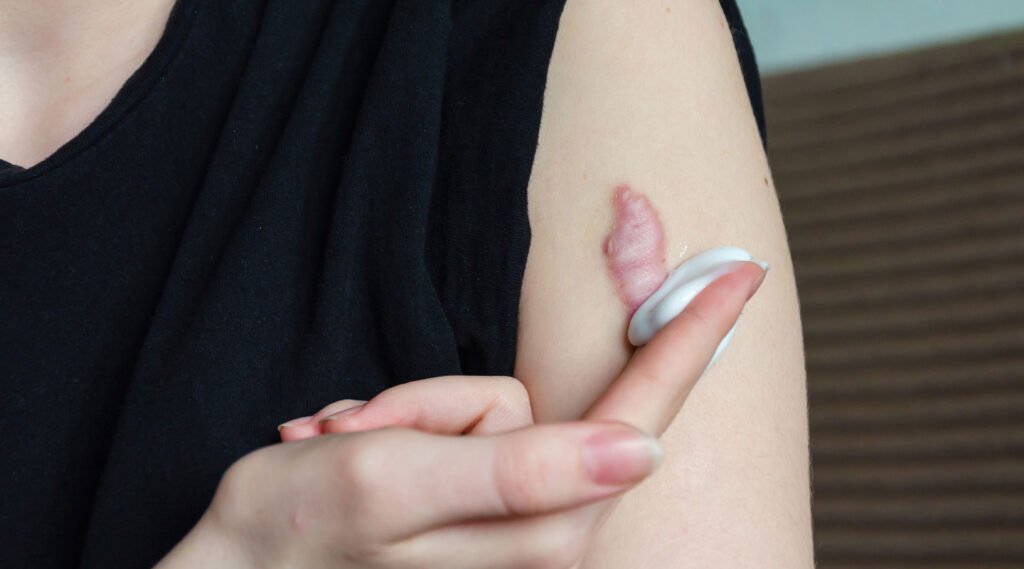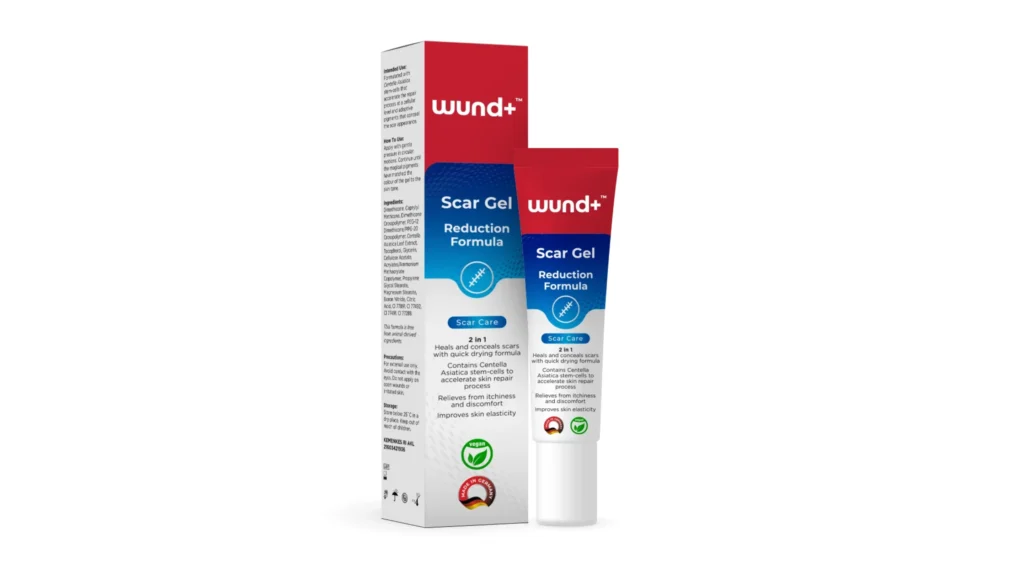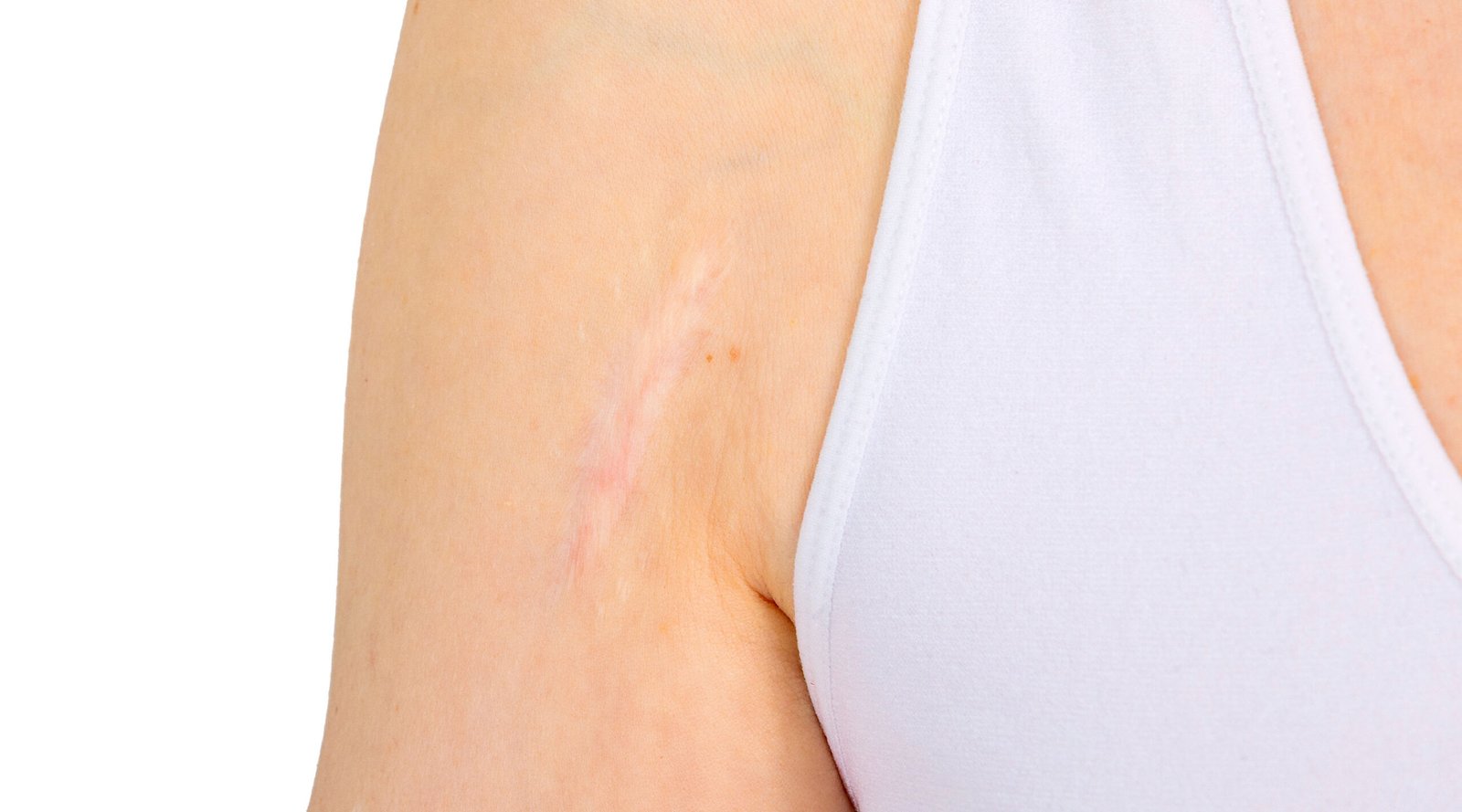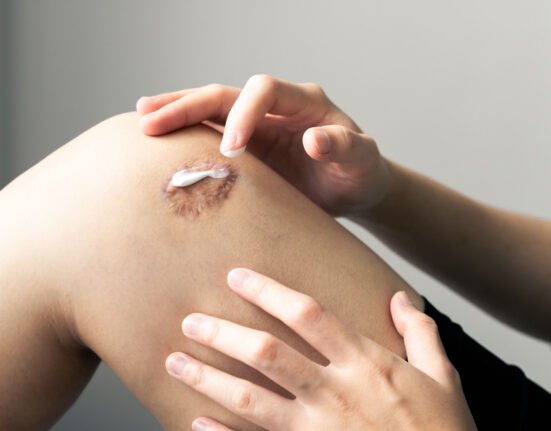Thickened Scars? How to Reduce Scars and Treat Keloids
After healing, wounds often leave behind thickened scars that feel rough or raised. This is a natural response of the body during healing, where excess collagen is produced to close the wound.
The deeper the injury, the higher the chance of scar tissue forming.
According to the Cleveland Clinic, scars develop because the new collagen that covers the wound does not have the same texture as normal skin.
Jill Salyards, DO, a board-certified dermatologist, explains that almost all wounds have the potential to leave scar tissue, except for very shallow surface wounds.
Types of Thickened Scars
Not all scars are the same. How the body repairs itself and how the wound is cared for will affect the outcome.
- Flat scars: usually similar in color to the skin and fade over time.
- Hypertrophic scars: raised, thick, reddish, and remain within the original wound area.
- Keloids: raised and spread beyond the original wound area, often more difficult to treat.
Difference Between Hypertrophic Scars and Keloids
- Hypertrophic scars usually appear 1–2 months after injury and may gradually flatten over time.
- Keloids can develop months or even years after the wound, spreading beyond the original injury site, and will not go away without specific treatment. This is why many people seek ways to treat keloids before they become larger.
How to Reduce and Care for Thickened Scars

There is no way to completely erase a scar, but there are many methods to improve its appearance and make the skin feel more comfortable. Common treatments include:
- Corticosteroid injections: help shrink and flatten hypertrophic scars and keloids.
- Laser therapy: smooths the skin’s surface and improves scar color, though it may carry a risk of hyperpigmentation.
- Topical treatments: using specialized gels or creams that support skin regeneration and help fade scars.
Recommendation: wund+™ Scar Gel

For daily care, wund+™ Scar Gel can be a practical option.
Key benefits:
- Helps fade thickened scars naturally.
- Hydrates the skin with Glycerin, Citric Acid, and Silicone.
- Supports skin regeneration with Centella Reversa stem cells.
- Improves scar color with micro-encapsulated pigment.
With regular use, Scar Gel can help reduce the appearance of scars, including keloids and hypertrophic scars, leaving the skin smoother and more elastic.
So, if you have thickened scars, are looking for a way to reduce them, or need an effective solution for treating keloids, take care of your skin with the right treatment from the very beginning.
References
Cleveland Clinic. Accessed in 2025. Scars.
Cleveland Clinic. Accessed in 2025. Hypertrophic Scars.
The Ohio State University. Accessed in 2025. Wound care: How to prevent scarring.














Leave feedback about this